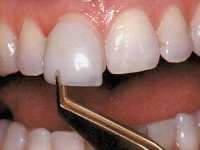 When it comes to correcting your smile, there may be no simpler way to do it than through the help of dental veneers. Also known as laminates, dental veneers are used to conceal problems with your teeth by covering the front surfaces of your teeth. But before you choose this cosmetic procedure, what are the instances where they are warranted, and what does the procedure entail?
When it comes to correcting your smile, there may be no simpler way to do it than through the help of dental veneers. Also known as laminates, dental veneers are used to conceal problems with your teeth by covering the front surfaces of your teeth. But before you choose this cosmetic procedure, what are the instances where they are warranted, and what does the procedure entail?
Types of Veneers
There are two types of dental veneers in South Concord, NC that you can opt for. The two types include direct and indirect veneers.
Direct veneers are made with composite resin material which are placed right on the tooth and then molded into place. Composite resin material has this reputation of being less durable and more prone to chipping compared to porcelain dental works. However, the main advantage of direct dental veneers is that the entire treatment can be completed in under an hour or in one visit to the dentist.
Indirect dental veneers, on the other hand, are made with porcelain material. Porcelain may be a very brittle material on its own but it becomes extremely durable by the time that the porcelain dental work is bonded to the surface of the tooth. The only problem with porcelain veneers is that they must be fabricated before they can be bonded to the surface of the tooth.
The Procedure
Getting direct veneers is a rather straightforward procedure because you do not have to come up with molds since the veneers are molded right on the teeth. On the other hand, indirect veneers are more complicated. Your dentist will basically start off with preparing the tooth which will receive the veneers. This includes shaving a part of the protective dental enamel so that the veneer does not stick out once it is bonded into place. Once this is done, your dentist will make impressions of your teeth. These molds of your teeth are then set to laboratory technicians which will fabricate the final dental veneers. Once the veneers have been made, that is when they can be cemented on the surfaces of your teeth.
Image Courtesy Pinterest

